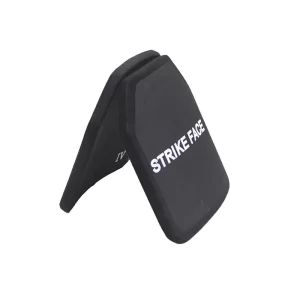FEMALE SCIENTIST DEVELOPS INNOVATIVE BODY ARMOR TECHNOLOGY
Visitors passing through the "Military Medicine: Challenges and Innovations" gallery at the National Museum of Health and Medicine will encounter an exhibit detailing advances in body armor technology. On display is the Interceptor Multi-Threat Body Armor System, an innovative modular design from the 1990s that protected service members better than any previous body armor design.To get more news about bullet proof zone, you can visit bulletproofboxs.com official website.
During the November 19, 2019, Medical Museum Science Café titled "Modern Body Armor: How Science, Medicine, and Collaboration Save Lives," retired U.S. Navy Capt. Marlene DeMaio discussed leading a medical team in a study that tested three types of body armor and validated the Interceptor system as the best contemporary design to combat military-grade weaponry.
DeMaio started her talk by noting the important development of Kevlar by Stephanie Kwolek in 1964. The wound and multilayered aramid fibers produced a protective material that became the basis for civilian and military soft armor. This armor system was later improved in the late 1990s by combining it with an outer "layer" of ceramic plates over the Kevlar. "We had a new ceramic system design, but … we weren't sure how effective it was … What we wanted to know, was if this new armor system could capture a high-velocity round so it doesn't go through the armor into the chest," said DeMaio.
 To determine this, a multi-service team of engineers, physicians, pathologists, lab technicians, lawyers, and ethicists from across all three military departments tested three types of armor systems and analyzed the data.
The first armor system was a Kevlar vest with no ceramic plate inserts. The second was the new ceramic plate design used in Vietnam and the Gulf War. The final armor system was the Interceptor system, an 8.4 pound, 28-ply Kevlar vest with two, four-pound boron carbide ceramic plates, called Small Arms Protective Inserts, embedded in the Kevlar. After first testing on surrogate models, the team then applied their methods using human tissue.
DeMaio and her colleagues outfitted specimens with minimally invasive devices that measured internal trauma. Then, after fitting the specimens with each armor system, they impacted the armor with rounds of different velocities. After the tests, the forensic team performed an autopsy on each specimen to identify the internal injuries. "There was no penetration of any specimen at any time. Every single projectile was caught in the armor," said DeMaio. Confirming the armor systems worked to stop penetrating trauma, the team then had to define the survivability levels of the indirect trauma.
"Survivable was minimal trauma. The wounded person would be able to continue through the injury and would live if treated … Immediately survivable was if you were treated within an hour (the Golden Hour). Lethal was overwhelming trauma. Regardless of treatment, you're going to expire," said DeMaio.
Based on these new definitions, the Interceptor yielded more survivable trauma than the other armors when impacted with high velocity military-grade rounds, with one survivable specimen and three immediately survivable. Field and registry data further confirmed the Interceptor system as a success.
"We have the highest survival rate of all recent conflicts, and it correlates with the number of vests not penetrated," said DeMaio. According to DeMaio, there are three major reasons for the current survival rates: modern comprehensive combat trauma care, rapid coordinated MED-EVAC, and personal protective systems (body armor). Prior to the development of the Interceptor system, the mortality rate of service members from Vietnam and World War II was one in three, with 90 percent of injuries being penetrating trauma to the chest. Now, the mortality rate has decreased to one in 10.
To determine this, a multi-service team of engineers, physicians, pathologists, lab technicians, lawyers, and ethicists from across all three military departments tested three types of armor systems and analyzed the data.
The first armor system was a Kevlar vest with no ceramic plate inserts. The second was the new ceramic plate design used in Vietnam and the Gulf War. The final armor system was the Interceptor system, an 8.4 pound, 28-ply Kevlar vest with two, four-pound boron carbide ceramic plates, called Small Arms Protective Inserts, embedded in the Kevlar. After first testing on surrogate models, the team then applied their methods using human tissue.
DeMaio and her colleagues outfitted specimens with minimally invasive devices that measured internal trauma. Then, after fitting the specimens with each armor system, they impacted the armor with rounds of different velocities. After the tests, the forensic team performed an autopsy on each specimen to identify the internal injuries. "There was no penetration of any specimen at any time. Every single projectile was caught in the armor," said DeMaio. Confirming the armor systems worked to stop penetrating trauma, the team then had to define the survivability levels of the indirect trauma.
"Survivable was minimal trauma. The wounded person would be able to continue through the injury and would live if treated … Immediately survivable was if you were treated within an hour (the Golden Hour). Lethal was overwhelming trauma. Regardless of treatment, you're going to expire," said DeMaio.
Based on these new definitions, the Interceptor yielded more survivable trauma than the other armors when impacted with high velocity military-grade rounds, with one survivable specimen and three immediately survivable. Field and registry data further confirmed the Interceptor system as a success.
"We have the highest survival rate of all recent conflicts, and it correlates with the number of vests not penetrated," said DeMaio. According to DeMaio, there are three major reasons for the current survival rates: modern comprehensive combat trauma care, rapid coordinated MED-EVAC, and personal protective systems (body armor). Prior to the development of the Interceptor system, the mortality rate of service members from Vietnam and World War II was one in three, with 90 percent of injuries being penetrating trauma to the chest. Now, the mortality rate has decreased to one in 10.
|
